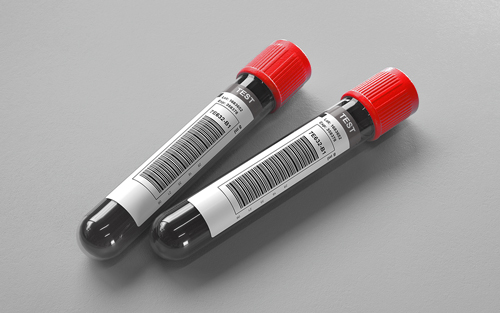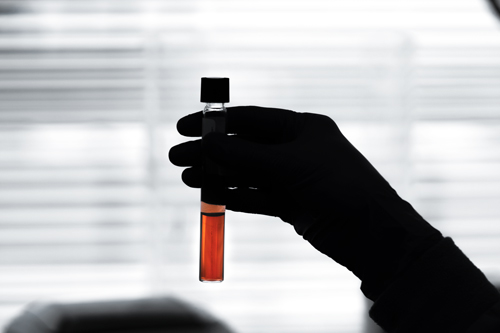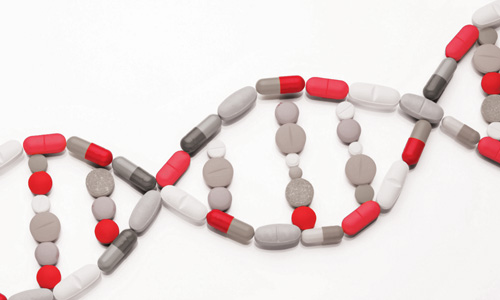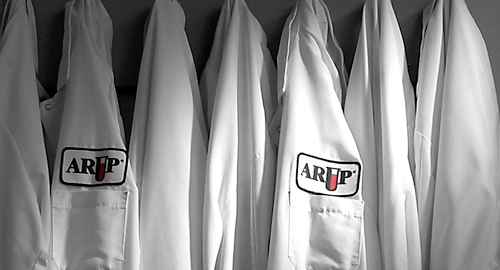Allergen, Food, Peanut Components IgE
Ordering Recommendation
New York DOH Approval Status
Specimen Required
Multiple patient encounters should be avoided
Serum separator tube (SST). Multiple specimen tubes should be avoided. Include all available specimen.
Separate serum from cells ASAP or within 2 hours of collection. Transfer 1.0 mL serum plus 0.1 mL for each additional allergen ordered to an ARUP standard transport tube. (Min: 0.5 mL plus 0.04 mL for each additional allergen ordered).
Refer to "Allergen Specimen Collection Instructions" at www.aruplab.com/testing/resources/specimen.
Refrigerated
Hemolyzed, icteric, or lipemic specimens
After separation from cells: Ambient: 48 hours; Refrigerated: 2 weeks; Frozen: 1 year
Methodology
Quantitative ImmunoCAP Fluorescent Enzyme Immunoassay
Performed
Sun-Sat
Reported
1-3 days
Reference Interval
| Test Number |
Components |
Reference Interval |
|---|---|---|
| Allergen, Food, Peanut IgE | Less than or equal to 0.34 kU/L | |
| Allergen, Food, Severe Peanut Ara h 1 | Less than or equal to 0.09 kU/L | |
| Allergen, Food, Severe Peanut Ara h 2 | Less than or equal to 0.09 kU/L | |
| Allergen, Food, Severe Peanut Ara h 3 | Less than or equal to 0.09 kU/L | |
| Allergen, Food, Severe Peanut Ara h 9 | Less than or equal to 0.09 kU/L | |
| Allergen, Food, Mild Peanut Ara h 8 | Less than or equal to 0.09 kU/L | |
| Allergen, Food, Severe Peanut Ara h 6 | Less than or equal to 0.09 kU/L |
Interpretive Data
Allergen results of 0.10-0.34 kU/L for whole peanut are intended for specialist use as the clinical relevance is undetermined. Even though increasing ranges are reflective of increasing concentrations of allergen-specific IgE, these concentrations may not correlate with the degree of clinical response or skin testing results when challenged with a specific allergen. The correlation of allergy laboratory results with clinical history and in vivo reactivity to specific allergens is essential. A negative test may not rule out clinical allergy or even anaphylaxis.
| Reporting Range (reported in kU/L) | Probability of IgE Mediated Clinical Reaction | Class Scoring |
|---|---|---|
| Less than 0.10 | No significant level detected | 0 |
| 0.10 - 0.34 | Clinical relevance undetermined | 0/1 |
| 0.35 - 0.70 | Low | 1 |
| 0.71 - 3.50 | Moderate | 2 |
| 3.51 - 17.50 | High | 3 |
| 17.51 - 50.00 | Very high | 4 |
| 50.01 - 100.00 | Very high | 5 |
| Greater than 100.00 | Very high | 6 |
FDA
Note
Test methodology uses solid-phase immunoassays against the whole peanut allergen (f13) and 6 antigenic epitopes (Ara h1, Ara h2, Ara h3, Ara h6, Ara h8, and Ara h9) and measures IgE antibody concentrations in patient serum or plasma. The binding of a specific IgE to an immobilized allergen component is detected by the addition of a secondary fluorescence-labeled anti-human IgE antibody.
Hotline History
Hotline History
CPT Codes
86003; 86008 x6
Components
| Component Test Code* | Component Chart Name | LOINC |
|---|---|---|
| 0055024 | Allergen, Food, Peanut IgE | 6206-7 |
| 2010810 | Allergen, Food, Severe Peanut Ara h 1 | 58779-0 |
| 2010811 | Allergen, Food, Severe Peanut Ara h 2 | 58778-2 |
| 2010812 | Allergen, Food, Severe Peanut Ara h 3 | 58777-4 |
| 2010813 | Allergen, Food, Severe Peanut Ara h 9 | 64965-7 |
| 2010814 | Allergen, Food, Mild Peanut Ara h 8 | 63477-4 |
| 2010815 | EER Allergen, Peanut Components | 11526-1 |
| 2010879 | Allergen, Food, Peanut Components Interp | 48767-8 |
| 3002252 | Allergen, Food, Severe Peanut Ara h 6 | 90880-6 |
Aliases
- Peanut Component Package
- Peanut Test
- Peanut molecular allergy
- uKnow Peanut
















